
How to Use relay_5V: Examples, Pinouts, and Specs
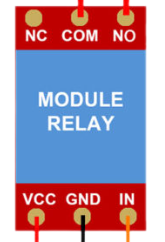
 Design with relay_5V in Cirkit Designer
Design with relay_5V in Cirkit DesignerIntroduction
A 5V relay is an electromechanical switch that allows a low-power control signal to operate a high-power circuit. It provides electrical isolation between the control circuit (e.g., a microcontroller) and the load circuit, ensuring safety and reliability. The relay is commonly used in applications where a microcontroller or other low-power device needs to control high-power devices such as motors, lights, or appliances.
Explore Projects Built with relay_5V
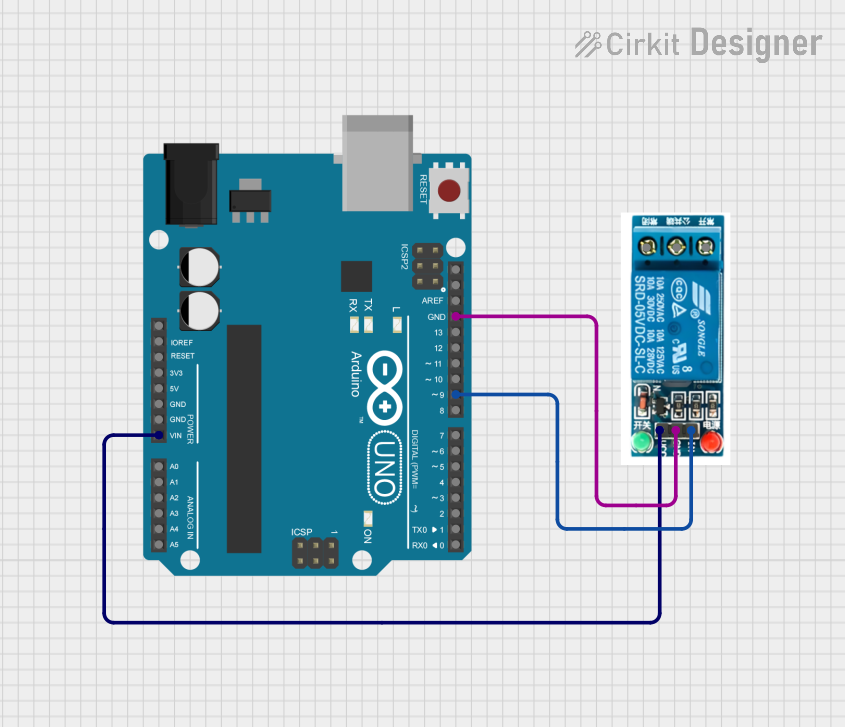
 Open Project in Cirkit Designer
Open Project in Cirkit Designer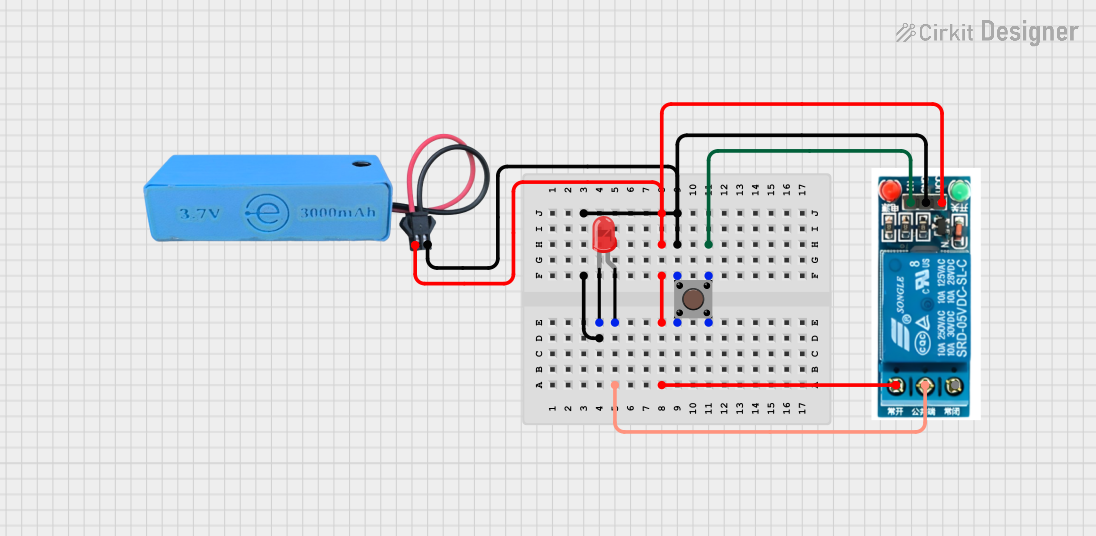
 Open Project in Cirkit Designer
Open Project in Cirkit Designer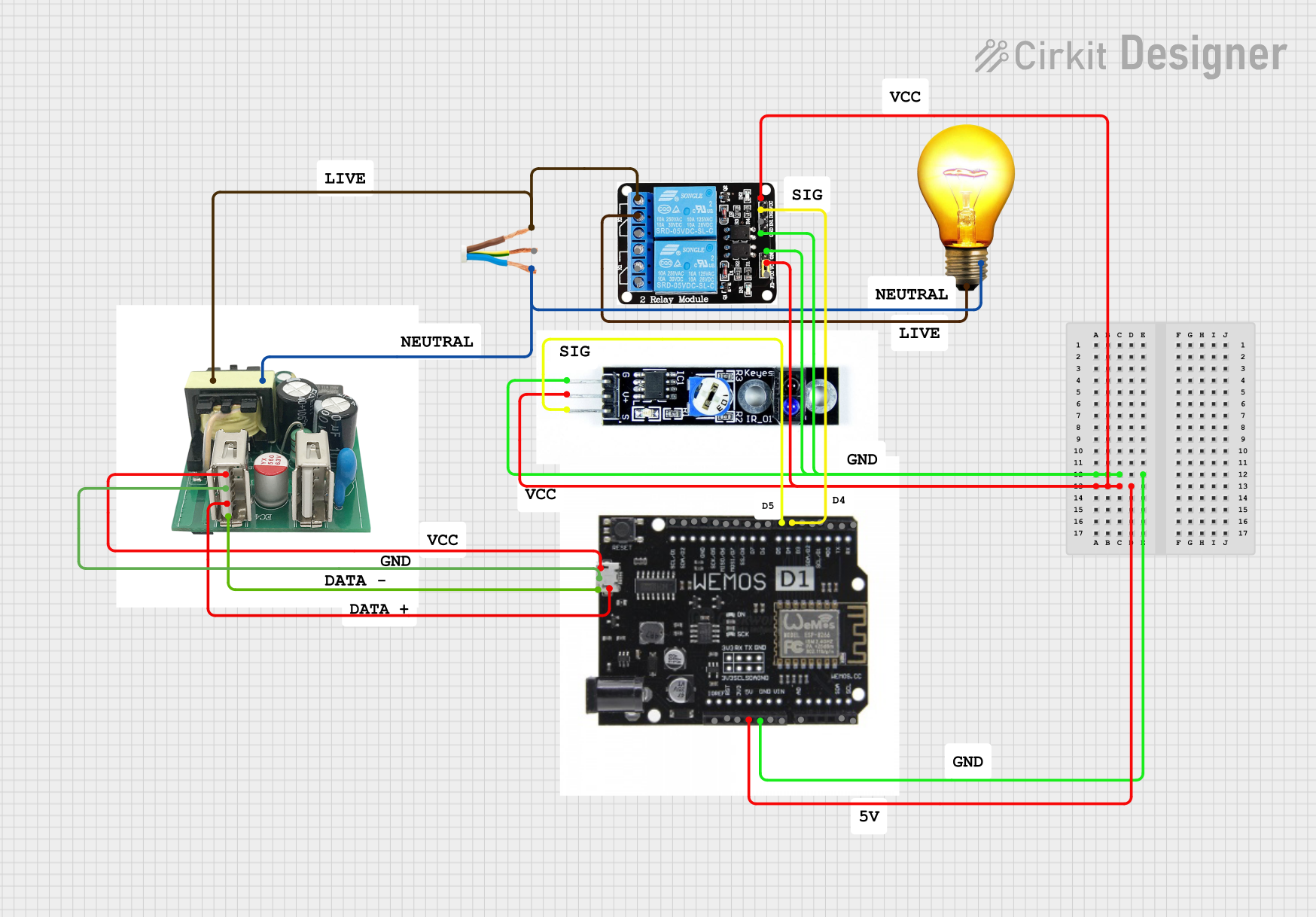
 Open Project in Cirkit Designer
Open Project in Cirkit Designer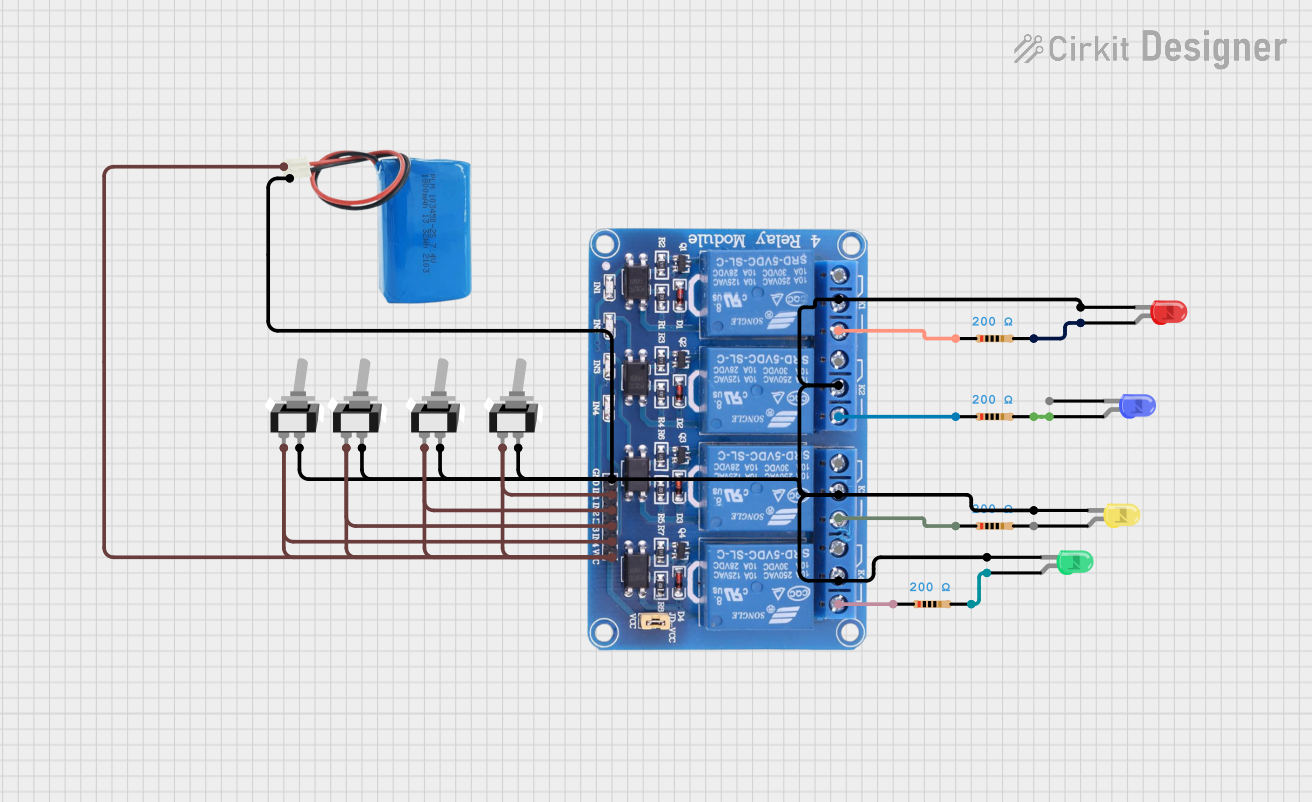
 Open Project in Cirkit Designer
Open Project in Cirkit DesignerExplore Projects Built with relay_5V

 Open Project in Cirkit Designer
Open Project in Cirkit Designer
 Open Project in Cirkit Designer
Open Project in Cirkit Designer
 Open Project in Cirkit Designer
Open Project in Cirkit Designer
 Open Project in Cirkit Designer
Open Project in Cirkit DesignerCommon Applications and Use Cases
- Home automation systems (e.g., controlling lights or fans)
- Industrial control systems
- Motor control
- Switching high-voltage AC or DC loads
- Electrical isolation in sensitive circuits
Technical Specifications
Below are the key technical details for a standard 5V relay:
| Parameter | Value |
|---|---|
| Operating Voltage | 5V DC |
| Trigger Current | ~70-100 mA |
| Contact Type | SPDT (Single Pole Double Throw) |
| Maximum Load Voltage | 250V AC / 30V DC |
| Maximum Load Current | 10A |
| Coil Resistance | ~70Ω |
| Electrical Isolation | Yes (via electromagnetic coil) |
| Switching Time | ~10 ms (operate) / ~5 ms (release) |
| Dimensions | Varies (e.g., 28mm x 10mm x 15mm) |
Pin Configuration and Descriptions
The 5V relay typically has 5 pins. Below is the pinout and description:
| Pin Name | Description |
|---|---|
| VCC | Connects to the 5V power supply to energize the relay coil. |
| GND | Ground connection for the relay coil. |
| IN | Control signal input (low-power signal from a microcontroller or other source). |
| COM | Common terminal for the load circuit. |
| NO | Normally Open terminal; connected to COM when the relay is activated. |
| NC | Normally Closed terminal; connected to COM when the relay is not activated. |
Usage Instructions
How to Use the Relay in a Circuit
- Power the Relay: Connect the VCC pin to a 5V DC power source and the GND pin to ground.
- Control Signal: Connect the IN pin to a digital output pin of a microcontroller (e.g., Arduino UNO). Use a current-limiting resistor if necessary.
- Load Circuit:
- Connect the high-power load to the COM and NO pins if you want the load to be powered only when the relay is activated.
- Alternatively, connect the load to the COM and NC pins if you want the load to be powered when the relay is not activated.
- Isolation: Ensure proper electrical isolation between the control and load circuits to prevent damage to the control circuit.
Important Considerations and Best Practices
- Flyback Diode: Always use a flyback diode across the relay coil to protect the control circuit from voltage spikes caused by the collapsing magnetic field when the relay is deactivated.
- Power Supply: Ensure the power supply can provide sufficient current to energize the relay coil.
- Load Ratings: Do not exceed the relay's maximum voltage and current ratings for the load.
- Noise Suppression: Use snubber circuits or capacitors to suppress electrical noise when switching inductive loads.
Example: Connecting a 5V Relay to an Arduino UNO
Below is an example of how to control a 5V relay using an Arduino UNO:
// Example: Controlling a 5V relay with Arduino UNO
// Pin 7 is used to control the relay
const int relayPin = 7; // Define the pin connected to the relay's IN pin
void setup() {
pinMode(relayPin, OUTPUT); // Set the relay pin as an output
digitalWrite(relayPin, LOW); // Ensure the relay is off at startup
}
void loop() {
digitalWrite(relayPin, HIGH); // Turn the relay on
delay(1000); // Keep the relay on for 1 second
digitalWrite(relayPin, LOW); // Turn the relay off
delay(1000); // Keep the relay off for 1 second
}
Troubleshooting and FAQs
Common Issues and Solutions
Relay Not Activating
- Cause: Insufficient current from the control circuit.
- Solution: Ensure the control circuit can supply at least 70-100 mA. Use a transistor or relay driver module if necessary.
Load Not Switching
- Cause: Incorrect wiring of the load circuit.
- Solution: Verify the connections to the COM, NO, and NC pins. Ensure the load is within the relay's voltage and current ratings.
Microcontroller Resetting When Relay Activates
- Cause: Voltage spikes or insufficient power supply.
- Solution: Add a flyback diode across the relay coil and ensure the power supply can handle the relay's current draw.
Relay Making Noise
- Cause: Rapid switching or unstable control signal.
- Solution: Check the control signal for stability. Avoid rapid switching of the relay.
FAQs
Q: Can I use a 5V relay to control a 220V AC appliance?
A: Yes, as long as the appliance's current and voltage are within the relay's maximum load ratings (e.g., 250V AC, 10A).
Q: Do I need a separate power supply for the relay?
A: Not necessarily. If your microcontroller's power supply can provide sufficient current, you can use it to power the relay. Otherwise, use a separate 5V power source.
Q: What is the purpose of the flyback diode?
A: The flyback diode protects the control circuit from voltage spikes generated when the relay coil is de-energized.
Q: Can I use the relay with a 3.3V microcontroller?
A: A 5V relay typically requires a 5V control signal. Use a transistor or relay driver module to interface a 3.3V microcontroller with the relay.